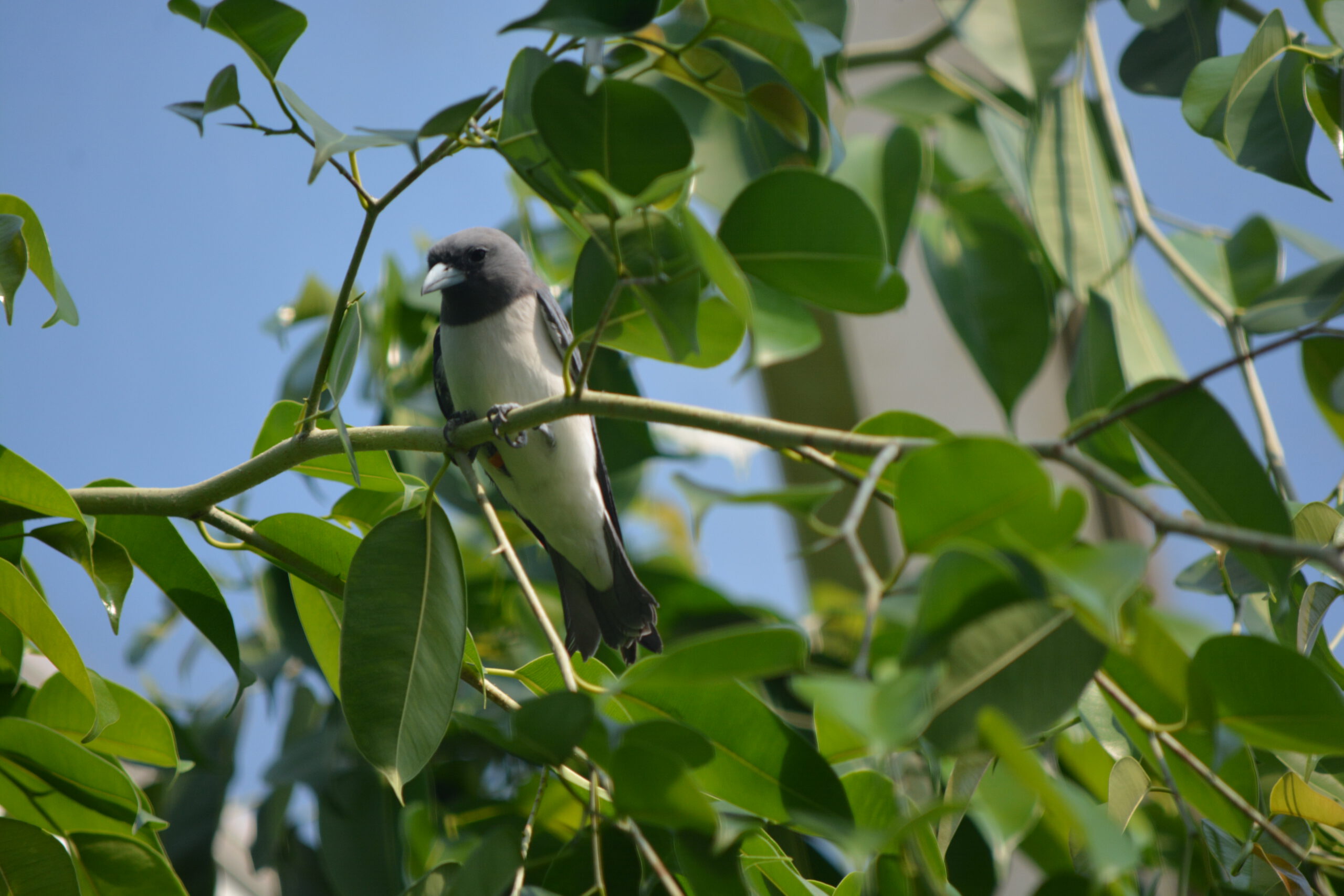I LIVE IN ASIA
The white-breasted woodswallow can be found on small island nations in southeast Asia, ranging from Indonesia to the Philippines, as well as regions in western Australia. This small bird species tends to gravitate towards forested areas close to water sources.
I AM AN INSECTIVORE
Although the white-breasted woodswallow has a brush-tipped tongue, an adaptation typically associated with nectar-eating birds, this black and white bird prefers to consume insects. They will often catch insects mid-flight, but will also forage on the ground for insects there.
WHITE-BREASTED WOODSWALLOWS ARE SOCIAL
This small bird species is fairly social and will often roost in groups of 10 to 100 individuals.
ODD ONE OUT
Out of the 16 different bird species within the woodswallow family, the white-breasted woodswallow is the only one that does not have stripes of white along the sides of its tail.
HELPING THE WHITE-BREASTED WOODSWALLOW IN THE WILD
By visiting the Fort Wayne Children’s Zoo, you are supporting local, regional, and global conservation. A portion of every ticket sold goes towards conservation of wildlife and wild places. Each year, the Fort Wayne Children’s Zoo donates over $250,000 to our conservation partners.
I AM IMPORTANT TO MY ECOSYSTEM
Because of the contents of their diet, the white-breasted woodswallow plays a very important role in keeping insect populations under control.

